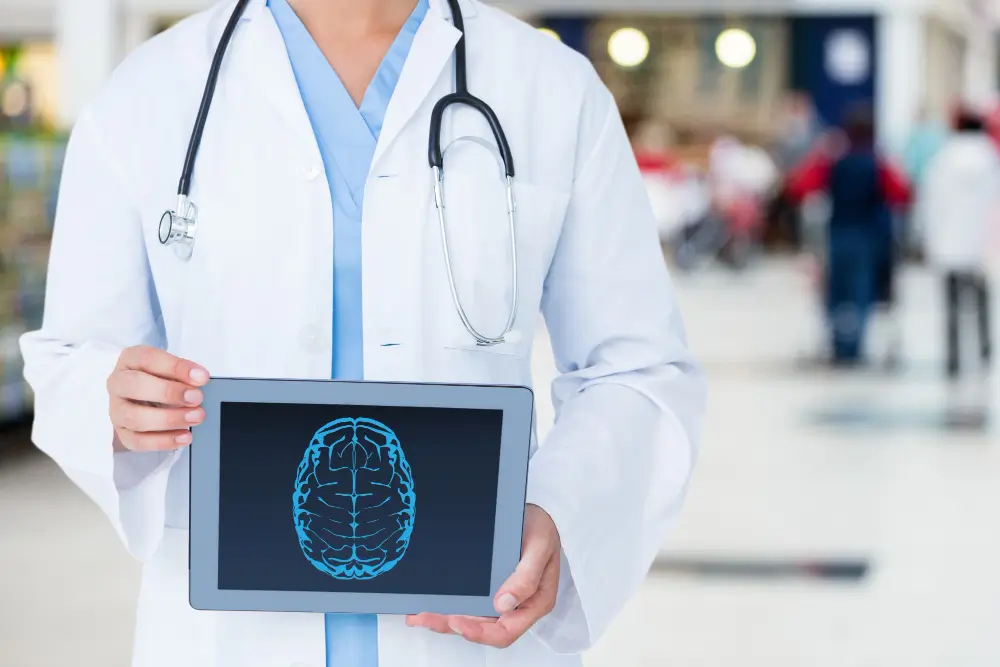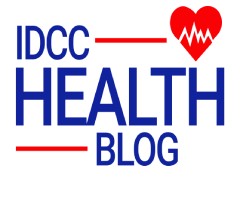What to Look for in Brain Injury Rehabilitation
Recovering from a brain injury is never a straightforward path, and the choices you make along the way can shape the entire journey. But when it comes to finding the right program, do you really know what to look for in brain injury rehabilitation? The answer goes beyond the basics of care, revealing crucial elements that could make all the difference in long-term recovery.
TL;DR
Brain injury rehabilitation works best when it starts early, is intensive, and involves a multidisciplinary team. A clear assessment of the injury, realistic and measurable goals, and a mix of cognitive and physical techniques help restore independence and quality of life. Continuous monitoring, with regular adjustments and innovative tools like virtual reality and brain stimulation, ensures treatment stays effective and supports long-term recovery.
Contact Brooklyn Injury Rehabilitation for specialized brain injury care

What Are the Key Components of Brain Injury Rehabilitation?
Brain injury rehabilitation requires an early, intensive, and specialized approach. The brain has recovery mechanisms called neuroplasticity, which are more effective when treatment begins promptly. Intensity also matters: therapies lasting at least three hours a day, including weekends, have shown better results.
A key element is the multidisciplinary team, which includes specialists such as physiotherapists, occupational therapists, speech therapists, neuropsychologists, psychiatrists, and neurologists. This integrated and coordinated approach ensures more effective treatment protocols. Both individual and group therapies are valuable, depending on the patient’s needs and type of therapy.
Rehabilitation is most effective when started early, delivered with high intensity, and carried out by a multidisciplinary team. Combining individual and group therapies with physical, cognitive, and emotional support creates a comprehensive approach that supports both patient recovery and family adaptation.
Assess the Severity and Type of Brain Injury
Evaluating a brain injury starts with a clinical assessment and the use of specific tools to determine both the severity and the type of damage. This process defines the prognosis and guides the most appropriate rehabilitation plan.
| Method | What it measures or identifies |
| Glasgow Coma Scale (GCS) | Patient’s level of consciousness and responsiveness |
| Neurological exam | Motor and sensory deficits, abnormal reflexes |
| CT / MRI | Location, extent, and characteristics of the injury |
| Neuropsychological tests | Cognitive and mental functions |
Evaluating severity and type with clinical, imaging, and cognitive tools is essential for designing a precise rehabilitation plan. Clear classification of the injury allows for better prognosis and tailored interventions that increase the chances of recovery.
Establish a Multidisciplinary Rehabilitation Team
Effective rehabilitation requires a multidisciplinary team working together. Coordinating different professionals makes it possible to design a personalized treatment plan that fits the patient’s and family’s specific needs.
The team should meet regularly—ideally every week—to share information, evaluate progress, and adjust goals as needed.
Team components
- Rehabilitation Physician (Physiatrist) or Neurologist: Oversees evaluation, diagnosis, and direction of the program.
- Physiotherapist: Focuses on mobility, balance, strength, and movement recovery.
- Occupational Therapist: Helps regain skills for daily activities and supports cognitive rehabilitation.
- Speech Therapist: Works on speech, language, communication, and swallowing.
- Neuropsychologist: Addresses memory, attention, behavior, and other cognitive functions.
- Social Worker: Provides emotional support and connects the patient and family with resources.
- Specialized Nurse: Delivers ongoing care, education, and support throughout the recovery process.
A multidisciplinary team ensures a comprehensive approach to brain injury recovery. Professional coordination, consistent follow-up, and tailored treatment optimize progress and provide vital support to both the patient and their family.
Set Realistic Goals and Milestones for Recovery
Brain injury recovery requires clear, achievable goals that guide the rehabilitation process. Goals should be specific, measurable, and adapted to the patient’s progress, always involving both the family and the care team.
The main focus is on promoting personal independence and improving quality of life, with a flexible plan that adjusts as the patient advances and recognizes each achievement.
| Area | Main goal | Progress milestones |
| Physical | Improve balance | Stand for 30 seconds → Walk with support → Walk unaided |
| Cognitive | Strengthen memory | Recall 3 words → Recall 5 words → Retain more complex info |
| Communication | Regain speech clarity | Pronounce syllables → Form short sentences → Hold conversations |
| Independence | Increase autonomy in daily life | Eat with help → Eat independently → Prepare simple meals |
Breaking big goals into smaller milestones makes rehabilitation clearer, more motivating, and more effective. By focusing on autonomy and adapting goals to progress, patients can improve quality of life and build confidence at every stage.
Incorporate Cognitive and Physical Rehabilitation Techniques
Rehabilitation after brain injury should combine cognitive and physical techniques tailored to patient needs. The principle of neuroplasticity allows the brain to form new connections, making consistent work in these areas essential.
Physical rehabilitation techniques
Physical Therapy
- Exercises to restore normal movement patterns, such as walking without dragging the foot or using the non-dominant hand.
- Balance and coordination training on unstable surfaces and with posture adjustments.
- Proprioception exercises to improve body awareness and movement control.
- Use of heat or cold therapy to temporarily reduce spasticity and facilitate muscle stretching.
Occupational Therapy
- Support for daily tasks like dressing, cooking, or bathing independently.
- Development of coordination and fine motor skills for specific activities.
Cognitive rehabilitation techniques
Cognitive function training
- Memory: Visualization, association, and categorization techniques.
- Attention and concentration: Activities such as crosswords, sudokus, and puzzles to keep the mind active.
- Executive functions: Exercises to improve planning, organization, and problem-solving.
Compensatory strategies
Teaching patients to use notes or reminders to reduce the impact of memory issues.
Brain training games
Computer or app-based exercises that adapt in difficulty and track progress, targeting memory, attention, and other cognitive skills.
Combining cognitive and physical techniques strengthens overall recovery. By working on mobility, independence, and mental functions at the same time, neuroplasticity is enhanced and opportunities for regaining autonomy increase.
Monitor Progress and Adjust the Rehabilitation Plan Regularly
Ongoing monitoring and adjustments are essential to ensure rehabilitation stays effective. This requires active participation from an interdisciplinary team and continuous evaluations to adapt treatment to the patient’s changing needs.
Monitoring and follow-up tools
- Cognitive and physical tests: Used regularly to measure memory, attention, mobility, and coordination.
- Personalized adjustments: Results guide therapy changes to match progress or address new challenges.
Innovations in monitoring and treatment
- Virtual reality: Provides visual and auditory feedback, increases motivation, and allows treatment to continue at home.
- Repetitive transcranial stimulation: An emerging technique that activates specific brain areas externally, showing promising results in motor recovery.
Constant follow-up and regular adjustments ensure each intervention fits the patient’s actual needs. With support from a dedicated team and innovative tools, recovery is maximized, and autonomy is strengthened over time.
Key Takeaways
- Early, intensive, and specialized care improves outcomes thanks to neuroplasticity, especially when therapy is started promptly and maintained consistently.
- Assessment tools such as the Glasgow Coma Scale, neurological exams, neuroimaging (CT/MRI), and neuropsychological tests are essential to classify severity, define prognosis, and guide treatment.
- Multidisciplinary teams (rehabilitation doctors, physiotherapists, occupational therapists, speech therapists, neuropsychologists, social workers, and nurses) provide a coordinated, personalized approach that supports both patients and families.
- Realistic, measurable goals broken into smaller milestones help track progress, motivate patients, and promote autonomy and quality of life.
- Cognitive and physical rehabilitation techniques—including physiotherapy, occupational therapy, cognitive training, compensatory strategies, and digital “brain training”—work together to maximize recovery.
- Continuous monitoring and adjustments with regular evaluations ensure treatment adapts to patient needs. Innovative tools like virtual reality and repetitive transcranial stimulation further enhance motivation and functional recovery.
- Overall, rehabilitation is most effective when it integrates physical, cognitive, and emotional support in a structured, adaptive, and patient-centered program.
Sources
- Popa, L. L., Chira, D., Strilciuc, Ș., & Mureșanu, D. F. (2023). Non-invasive systems application in traumatic brain injury rehabilitation. Brain sciences, 13(11), 1594.
https://www.mdpi.com
- Eapen, B. C., & Cifu, D. X. (2018). Rehabilitation after traumatic brain injury. Elsevier Health Sciences.
https://books.google.com.co/books
